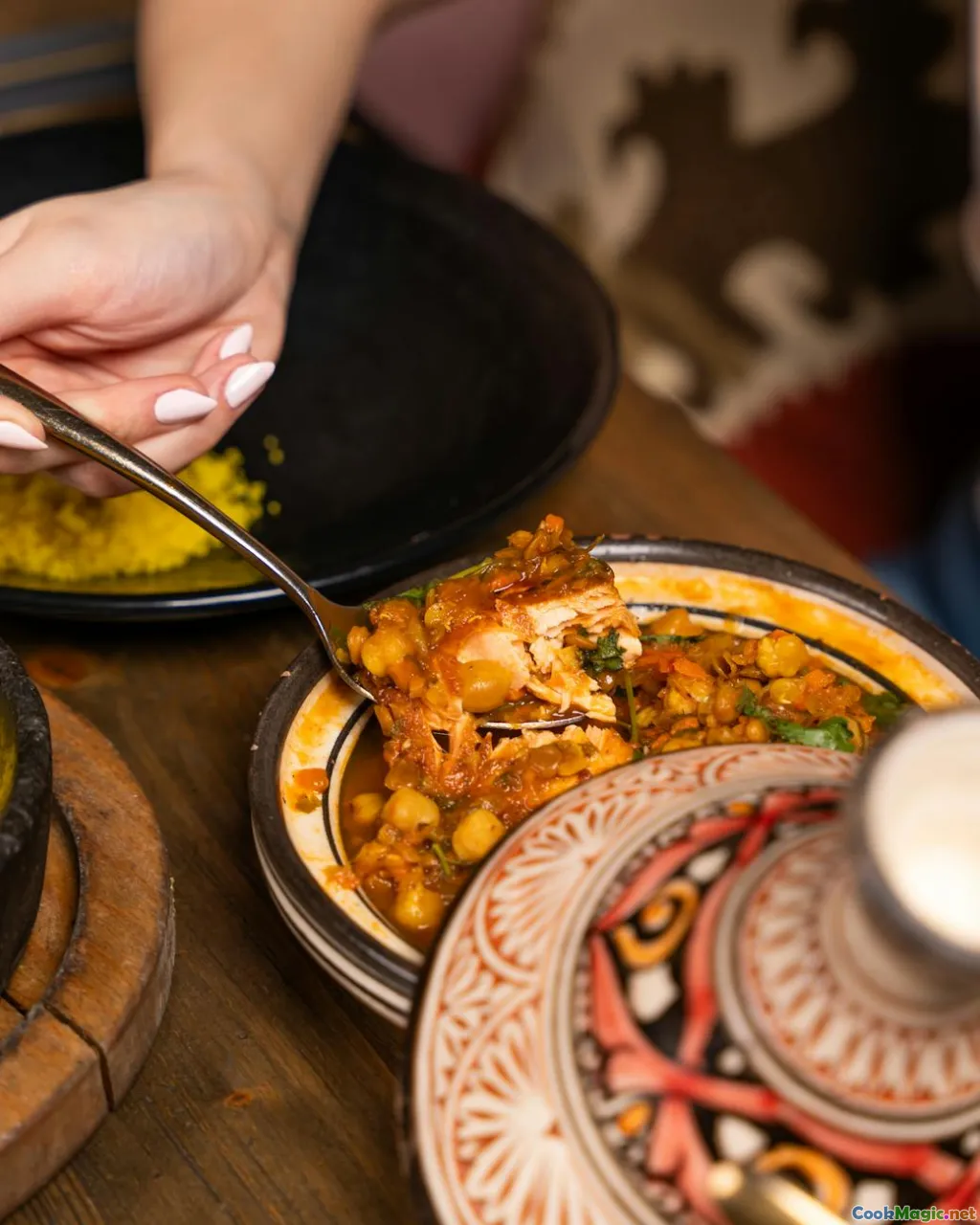Culinary Secrets of Moroccan Spices
8 min read Discover the vibrant world of Moroccan spices—aromatic, complex, and essential to authentic flavors, with insights into their history and culinary magic. May 02, 2025 12:00
Culinary Secrets of Moroccan Spices
Moroccan cuisine is a tapestry woven with centuries of history, culture, and vibrant flavors. At the heart of this culinary tapestry lies a secret that transforms simple ingredients into sensory explosions: an extraordinary array of spices. These spices are not mere seasonings; they are the soul of Moroccan dishes, each with its own story, aroma, and purpose.
The Allure of Moroccan Spices: An Aromatic Journey
Imagine walking through a bustling souk in Marrakech, where the air is thick with the scent of cinnamon, cumin, saffron, and a hundred other spices. The vibrant colors and intoxicating aromas beckon both locals and travelers alike, promising a taste of Morocco’s rich culinary heritage.
Moroccan spices are distinguished by their depth and complexity. Unlike the straightforward heat of chili or the sweetness of vanilla, these spices weave a layered narrative—warmth, earthiness, floral notes, and a hint of sweetness—all in a single pinch or rub.
Historical Roots and Cultural Significance
The history of Moroccan spices is as old as the ancient trade routes that crisscrossed Africa, the Middle East, and Europe. Known as the Silk Road of spices, Morocco was a pivotal hub where traders exchanged not only goods but also culinary traditions.
Saffron, one of the most treasured Moroccan spices, was historically so valuable that it was used as currency in some regions. Its deep golden hue and delicate floral aroma have long been associated with luxury and celebration.
Cumin and coriander, staples in Moroccan kitchens, trace their origins to the Middle East and India, respectively. These spices arrived through centuries of trade, gradually becoming indispensable ingredients in Moroccan stews, salads, and bread.
The Heart of Moroccan Spice Blends
Ras El Hanout: The Master Spice Blend
Arguably the most iconic Moroccan spice mixture, Ras El Hanout translates to "head of the shop"—symbolizing a blend of the best spices a merchant has to offer. No two blends are exactly alike, as each spice merchant or family has their own secret recipe.
A typical Ras El Hanout includes a complex mix of cinnamon, ginger, turmeric, allspice, cardamom, nutmeg, and sometimes dried flowers like rose or orange blossom. These spices are toasted gently to release their essential oils, then ground into a fragrant, slightly sticky paste or powder.
This blend is the soul of many Moroccan dishes, adding depth to tagines, couscous, and even grilled meats. Its aroma alone can evoke images of bustling markets and warm hearths.
Other Essential Spices
- Saffron: The golden thread that imparts color, aroma, and a subtle bitterness, transforming broths and rice dishes.
- Cumin: Earthy and warm, cumin is a backbone flavor that enhances everything from lentils to kebabs.
- Coriander: Slightly citrusy, it offers freshness and balances richer spices.
- Paprika and Chili: For smoky heat and vibrant color.
- Ginger and Turmeric: Warm, slightly spicy, and medicinal, these spices bring brightness and health benefits.
The Art of Using Moroccan Spices
Toasting and Grinding
To unlock the full potential of Moroccan spices, toasting is key. Gently dry-toast whole spices in a hot skillet until fragrant—this step releases essential oils, intensifying aroma and flavor.
Grinding fresh spices just before cooking ensures maximum flavor. Many Moroccans keep traditional mortar and pestle sets, relishing the tactile experience and control over texture.
Layering Flavors
Moroccan cooking is all about layering—adding spices at different stages to build complexity. For example, cumin and coriander might be toasted at the beginning, saffron infused into broth, and Ras El Hanout sprinkled at the end for a final fragrant punch.
Balancing Aromatics
Spices are often paired with herbs like parsley, cilantro, and mint, along with ingredients like preserved lemons and olives, creating a harmonious balance of flavors and aromas.
Signature Moroccan Dishes and Spices
Tagine
A slow-cooked stew named after the earthenware pot, tagine is a showcase for Moroccan spices. A typical chicken tagine with preserved lemon and olives is enriched with ginger, saffron, and cumin, resulting in tender meat infused with aromatic juices.
Couscous
Steamed semolina grains serve as a blank canvas for spiced vegetables, meats, and broths. The addition of ras el hanout transforms plain couscous into a fragrant feast.
Pastilla
A savory-sweet pie combining chicken, almonds, cinnamon, and saffron, wrapped in flaky pastry. The spices create a mesmerizing aroma that invites curiosity and delight.
Personal Reflections and Culinary Inspirations
Having traveled through Morocco’s bustling markets and shared countless meals with local families, I’ve come to understand that Moroccan spices are more than ingredients—they are a reflection of history, hospitality, and identity.
The first time I tasted a Moroccan lamb tagine infused with fresh saffron and cinnamon, I was transported. The layers of flavor told stories of caravans crossing deserts, of oud-scented souks, and of generations dedicated to perfecting their spice blends.
In my kitchen, I cherish the ritual of sourcing whole spices and grinding them fresh. It’s a connection to Moroccan tradition, a way to honor the land and its people.
Conclusion: Embracing the Magic of Moroccan Spices
Moroccan spices are a culinary secret that invites us to slow down, savor, and appreciate the intricate dance of flavors. They embody a rich cultural heritage, a history of trade and storytelling, and a profound love for sharing good food.
Next time you cook a dish inspired by Morocco, remember that each pinch, each grind, carries centuries of tradition. Embrace these aromatic secrets, and let your palate embark on a journey of discovery and delight.









